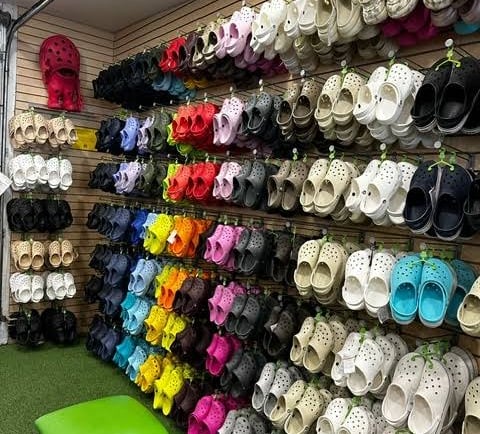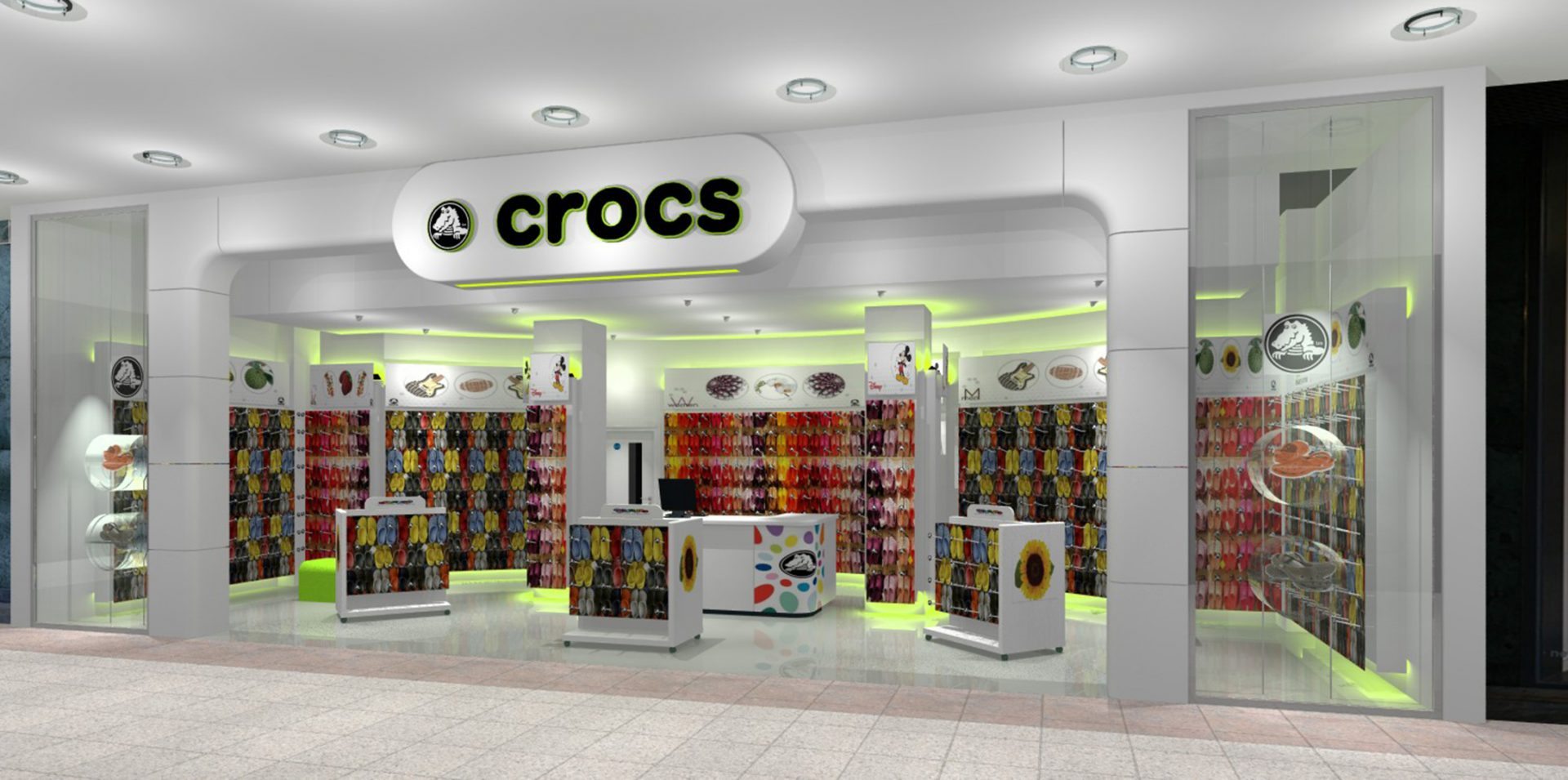👟 Welcome to Crocsy Vibe – Where Comfort Meets Global Style! 🌈
Future of Crocs Shopping: Virtual Try-On & AR Tech
Experience the future of Crocs shopping with innovative virtual try-on and AR technology! Preview styles, colors, and Jibbitz charms on your feet before you buy, whether at home or in-store. Save t...
SHARAD RAJGURU
7/25/20258 min read


Introduction to Virtual Try-On and AR Technologies
In recent years, technological advancements have dramatically transformed the online shopping experience, particularly in the footwear industry. Virtual try-on (VTO) and augmented reality (AR) technologies are at the forefront of this revolution. Virtual try-on technology allows consumers to visualize how a product, such as a pair of Crocs, will look on their feet without physically trying them on. This is achieved through sophisticated algorithms and software that utilize a smartphone or a computer's camera to create a real-time visual simulation. As a result, shoppers have the ability to browse various styles, colors, and sizes with the assurance that they are making an informed choice.
Augmented reality takes this a step further by overlaying digital information in the real world. For instance, using an AR-enabled app, users can point their device at their feet and see a 3D model of Crocs superimposed on them. This immersive experience enhances decision making by allowing potential buyers to assess fit, style, and color in their own environment. These technologies cater not solely to the aesthetic components of footwear shopping but also improve customer satisfaction rates and reduce the likelihood of returns.
The rollout of virtual try-on and AR technologies across e-commerce platforms has been met with enthusiasm, particularly among retailers targeting niche markets like Crocs enthusiasts. These innovations are not only empowering consumers to feel more confident in their footwear choices but are also setting a precedent for future advancements in online shopping strategies. By bridging the gap between digital and physical retail experiences, VTO and AR are reshaping consumer expectations and driving the evolution of how we purchase shoes.
How AR Enhances the Crocs Shopping Experience
Augmented Reality (AR) technology is significantly transforming the way consumers shop for Crocs, offering an immersive experience that goes beyond traditional methods. One of the most notable features of AR in the Crocs shopping experience is the real-time visualization of different styles and colors. This capability allows customers to see how various Crocs designs look when worn, eliminating the uncertainty often associated with online shopping. By utilizing their smartphone or AR glasses, users can project virtual Crocs onto their feet, enabling them to make informed decisions based on actual appearance.
Another exciting aspect of AR technology is the ability to experiment with different Jibbitz™ charms. These customizable decorations for Crocs provide a personal touch to footwear, and AR applications allow users to mix and match these charms in a virtual environment. Customers can see how various combinations of charms look on their chosen Crocs style, empowering them to curate a product that reflects their personality. This interactive experience instills a sense of ownership and creativity in the shopping process, enhancing customer satisfaction.
Additionally, trying on shoes in a virtual space offers a significant advantage over solely relying on static images. AR bridges the gap between online and in-person shopping, providing a dynamic context that images alone cannot convey. By simulating the fit and feel of Crocs, users can assess the comfort and style they desire without stepping foot in a physical store. This virtual try-on feature not only saves time but also reduces the likelihood of returns, benefiting both customers and retailers. In essence, AR technology streamlines the Crocs shopping experience by integrating fun, customization, and practicality into the process.
The Role of Mobile Apps and Websites in Virtual Try-On
The rapid development of mobile apps and websites has transformed the landscape of online shopping, particularly in the context of footwear brands like Crocs. Virtual try-on technologies are increasingly being integrated into mobile platforms, providing users with innovative ways to assess product fit and style without physically trying them on. These advancements leverage augmented reality (AR) capabilities to enhance the user experience, ultimately making shopping more convenient and efficient.
First and foremost, user-friendly interfaces are critical in ensuring that customers can easily navigate through the virtual try-on features. Modern mobile applications and websites are designed with intuitive layouts, allowing users to seamlessly upload their photos or use live camera feeds to visualize Crocs on their feet. This ease of use enhances customer engagement and satisfaction, boosting the likelihood of purchase. Additionally, accessibility features have become a priority, enabling diverse user demographics, including those with disabilities, to participate in this innovative shopping experience.
Furthermore, AR technologies embedded within mobile apps provide realistic visualizations, showcasing how different Crocs styles, colors, and sizes appear when worn. This feature eliminates the uncertainty often associated with online shopping, as customers can experience a personalized fitting process from the comfort of their homes. With the integration of AI algorithms, the virtual try-on process continuously improves, offering increasingly accurate representations based on individual body types and preferences.
Mobile apps also incorporate features such as social sharing, allowing users to receive feedback from friends and family on their choices in real-time. By combining these interactive elements with virtual try-on functionality, brands like Crocs are refining the online shopping experience. Overall, the evolution of mobile platforms not only streamlines the buying process but also enriches the way consumers engage with their desired products, showcasing the profound impact of virtual try-on technologies on retail.
Consumer Confidence and Decision-Making with AR
As the retail landscape evolves, augmented reality (AR) technology is playing a pivotal role in enhancing consumer confidence, particularly in the footwear segment. The integration of AR systems allows potential buyers to visualize how shoes will look on their feet without needing to try them on physically. This immersive experience is empowering, as it addresses one of the primary concerns shoppers face: uncertainty regarding fit and appearance. By simulating an accurate representation of different styles and sizes, AR reduces ambiguity, enabling customers to make informed purchasing decisions.
The functionality of AR enables users to engage in virtual try-ons, where they can use their smartphones or other devices to superimpose images of shoes onto their feet. This feature not only boosts customer engagement but also significantly enhances satisfaction levels. Consumers are more likely to proceed with a purchase when they have a visual assurance of what they can expect. Furthermore, the instant feedback provided through AR aids in navigating choices, allowing users to explore various colors, designs, and styles quickly. Consequently, this level of interactivity promotes a more enriched shopping experience.
Moreover, AR's capacity to mitigate return rates cannot be overstated. With the traditional fitting room experience absent in online shopping, many consumers find themselves returning items due to misfits or dissatisfaction with aesthetic choices. However, by incorporating AR technology, brands can significantly decrease the likelihood of returns. When customers better understand how a product will feel and look, they are less prone to experience post-purchase regret. Thus, AR not only cultivates a sense of confidence in consumers but also streamlines the purchasing process, fostering greater loyalty towards brands employing such innovations.
AR in Customization: Styles, Sizes, and Colors
Augmented reality (AR) technology is revolutionizing the way consumers interact with products, particularly in the realm of footwear customization. For Crocs enthusiasts, AR tools facilitate a unique shopping experience that goes beyond traditional browsing. Shoppers can visualize their selections in real-time, allowing them to see how different styles, sizes, and colors of Crocs look on their feet without leaving their homes.
This innovative technology empowers users to experiment with various color combinations and styles. For instance, customers can choose from an extensive palette of colors and instantly see how each option complements their personal style. Whether someone is looking for classic hues or vibrant shades, AR provides a dynamic platform for comparison. Such tools reduce the uncertainty often associated with online purchases, as they allow users to gauge how a specific pair of Crocs fits into their wardrobe.
Additionally, the capability to mix and match Jibbitz™ designs adds another layer of personalization. Jibbitz™, the distinctive charms that adorn the iconic Crocs, can significantly alter the shoe's appearance. With AR, shoppers can virtually place various Jibbitz™ on their selected styles, enabling them to visualize the final look before making a purchase. This feature not only enhances the customer experience but also encourages creativity, allowing individuals to express their unique fashion sense. The interactive nature of AR in footwear shopping means that the customization process is more engaging and enjoyable.
Overall, AR technology streamlines the customization of Crocs, making it an indispensable tool for modern shoppers. By enabling consumers to easily visualize their preferences, AR stands to elevate the online shopping experience, transforming it into a personalized journey that aligns with individual tastes.
The Future of AR in Footwear Shopping
As technology continues to evolve, the integration of Augmented Reality (AR) in footwear shopping is poised to revolutionize the consumer experience. One of the most significant advancements anticipated is the improved realism in virtual try-ons. Current AR technology allows users to visualize how different shoe styles will look on their feet. Future developments aim to enhance this realism by incorporating advanced algorithms and more sophisticated visual rendering techniques. These enhancements are likely to provide customers with a near-exact representation of the footwear, which can considerably influence purchasing decisions.
Moreover, the collaboration between footwear brands like Crocs and influential figures in fashion and lifestyle could pave the way for engaging marketing strategies through AR. These influencers can showcase Crocs in dynamic ways, enabling consumers to utilize AR to virtually experience these styles in their environments. Such partnerships may not only promote specific products but also enrich the consumer's understanding of how different footwear styles can fit into their personal aesthetic. This transformative approach can lead to an increase in customer engagement and satisfaction.
Additionally, the future of AR in footwear shopping may also foster a more interactive shopping experience. By allowing customers to customize their shoes using AR technology, they can visualize various colors, patterns, and accessories in real-time, further enhancing their decisions. The seamless integration of these capabilities could lead to higher conversion rates as shoppers feel more confident in their choices. Furthermore, as AR becomes more accessible through mobile devices and apps, the barriers to entry for engaging with this technology will diminish, making virtual try-ons commonplace in the footwear shopping experience.
In conclusion, the potential of AR technology in the footwear industry, particularly in virtual try-on experiences, is vast. With advancements in realism and strategic collaborations with influencers, the future of Crocs shopping is set to witness substantial transformation, ultimately benefiting both consumers and brands alike.
Conclusion: Embracing the Change in Crocs Shopping
The advent of virtual try-on and augmented reality (AR) technologies has substantially transformed the Crocs shopping experience, creating a more interactive and personalized environment for consumers. As we have explored, these innovative tools enable shoppers to visualize how Crocs shoes will look on their feet in real time, eliminating the guesswork traditionally involved in online purchasing. With the ability to see various styles and colors in a lifelike manner, customers can make informed decisions, thus enhancing their overall shopping satisfaction.
Moreover, the integration of AR offers a unique opportunity for customers to engage with Crocs products in a way that was previously unattainable. Users can experiment with different combinations and styles without the need to physically visit a store, significantly driving convenience. This technological shift not only caters to the growing demand for seamless shopping experiences but also addresses a critical consumer pain point: the uncertainty of fit and appearance when shopping online.
As these technologies continue to evolve, they promise to further streamline the purchasing process and foster a deeper connection between consumers and the brand. Embracing this change is essential for both shoppers and retailers alike, as it represents a significant advancement in how individuals engage with products. Looking forward, it will be fascinating to witness how Crocs and other retailers adapt to these changes, ultimately shaping the future of footwear shopping.
In conclusion, the advancements in virtual try-on and AR technologies underscore a pivotal moment in the retail landscape. By recognizing and adapting to these innovations, customers can enjoy greater convenience, an enhanced shopping experience, and overall satisfaction, thus making their Crocs purchases more enjoyable and efficient.

Get in touch
Address
3721 Single Street
Quincy, MA 02169
Contacts
123-456-7890
info@email.com
